This is a story of the tail wagging the dog, leading to a brand-new beast.
For decades, Lloyd Baggs and company had one primary goal: to create pickups that faithfully re-create the true sound of an acoustic guitar via amplification. Many feel that they do this as well as anyone. It means everything to have companies such as Martin and Santa Cruz Guitars offer their instruments with Baggs electronics.
Still, it’s understandable that after chasing such an elusive rabbit down its proverbial hole, Baggs, originally a luthier who built guitars for Jackson Browne and Ry Cooder, would eventually come to this revelation: “What if I started with the pickup and built the guitar around it?”
That’s the story of the Baggs AEG-1 Acoustic Electric Guitar, and it starts with the new HiFi Duet.
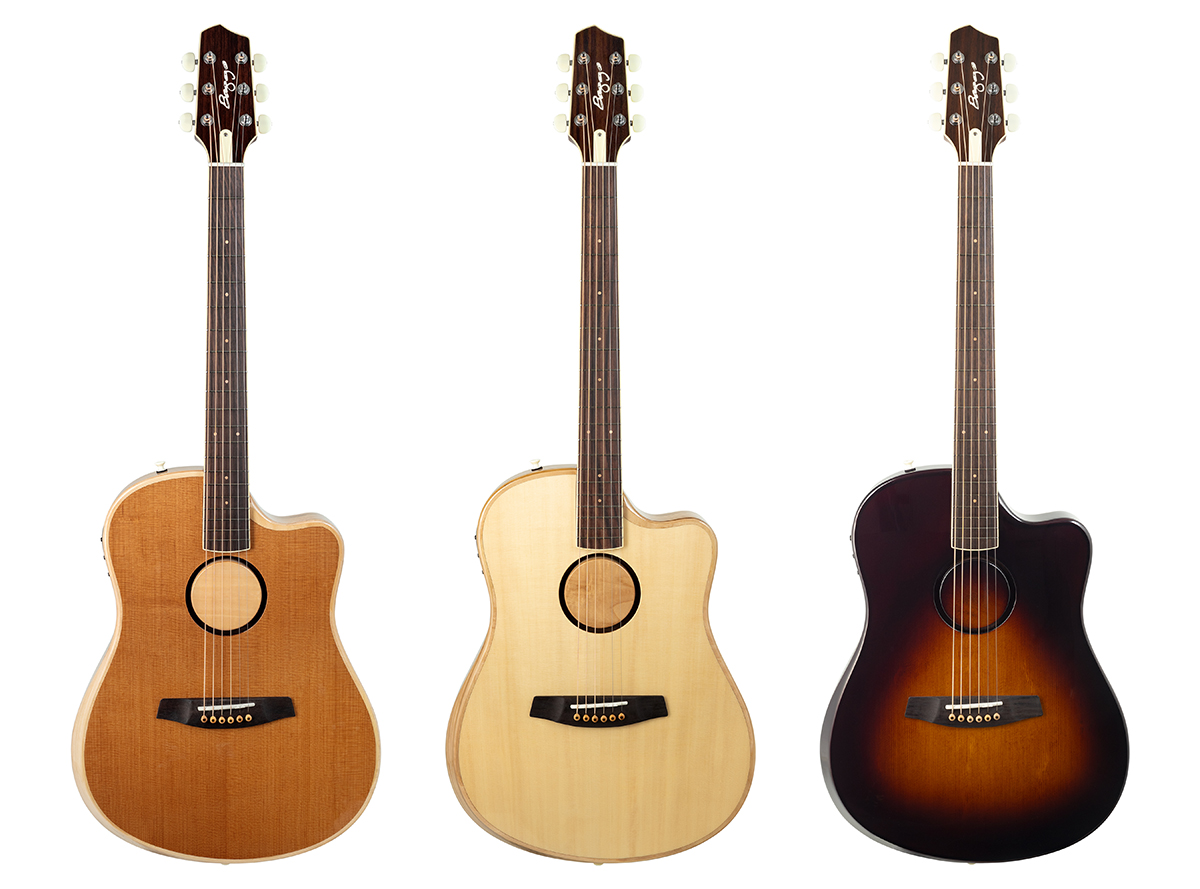
Like everything about this instrument, the pickup is unlike almost anything else. Rather than a typical piezo undersaddle transducer, the HiFi Duet features two bridge-plate sensors affixed to the underside of the bridge plate. They’re designed to deliver string vibration and body resonance without the dreaded “quack” inherent to most piezo pickups. That’s the HiFi part.
The second element in the Duet is a Baggs Silo microphone customized for the voice of the AEG-1. It’s engineered to perform as if it were outside the guitar, providing ambience with isolation and feedback resistance. Both feed into a single summed output. Controls include flywheels for volume, tone and mic/blend, plus a phase button, all integrated into the upper bout.
The AEG-1 comes in three styles. All have Indian rosewood backs, with the primary distinction based on three different top materials: Torrefied Sitka Spruce, Natural Engelmann Spruce, and Sunburst Sitka Spruce. I picked Sunburst, which appeared far more interesting and sophisticated. Apart from the Sunburst’s dusky appearance, the overall design aesthetic of the three is similar. Notable details include a heavily contoured dreadnought-ish cutaway body with a belly-button-like sound hole that’s filled in and surrounded by a ring that takes on the role of a rosette. A uniquely contoured headstock caps it off nicely. To my eyes, the natural-finish models appeared a bit plain Jane, but the Sunburst is as handsome in person as it appeared online.
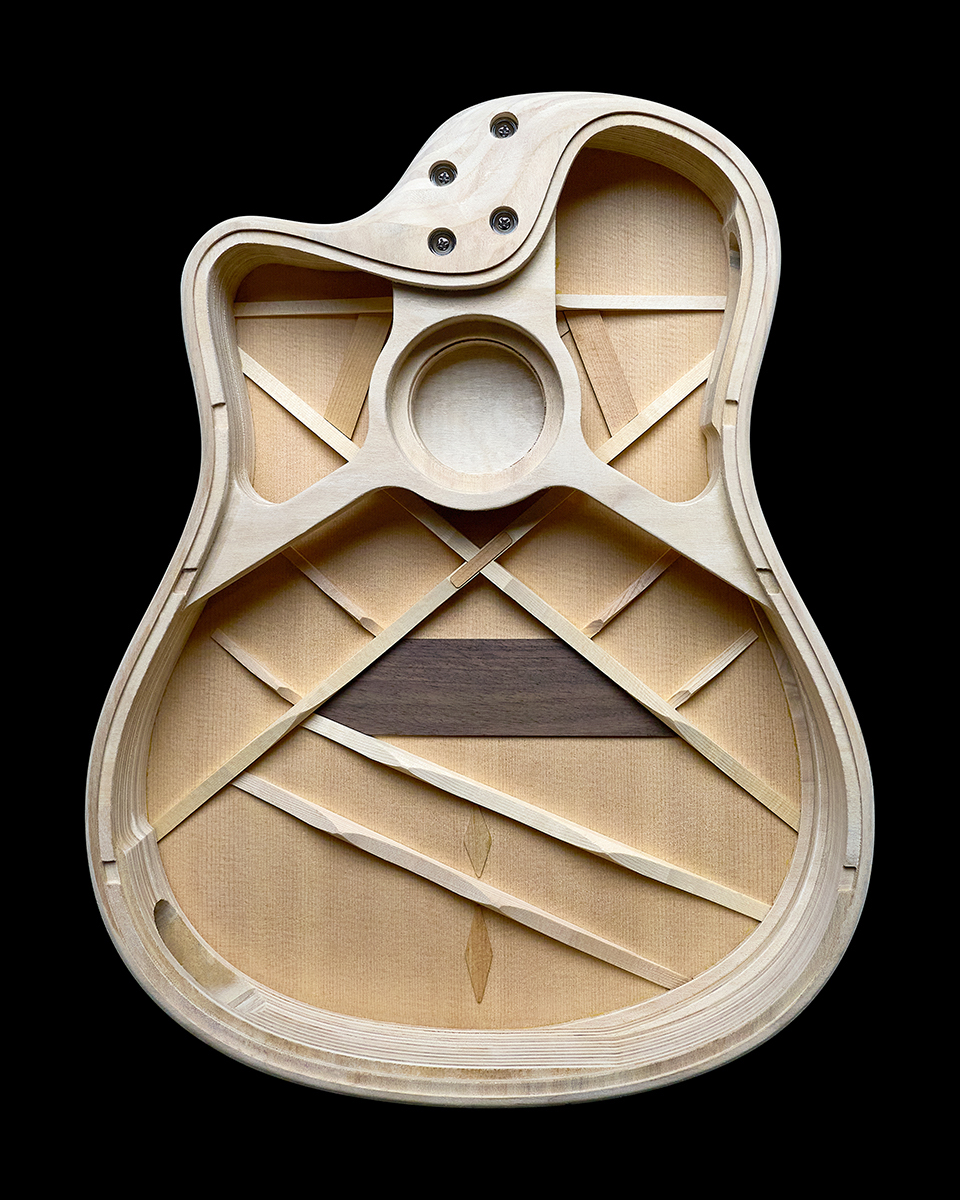
My began my test of the AEG-1 by strumming it acoustically, right out of the box. The first thing that caught my attention was how “real” the neck feels. Bound with a cream-colored binding, it does not feel at all like some wimpy counterpart to a thinline body. Upon further investigation, I came to realize why Baggs had to re-imagine the whole concept of a thinlne body. Otherwise, there’s no way it would support such a hearty neck that feels as if it might have been plucked off a Martin. More on that in a minute.
The immediate point is fabulous playability all around, up and down. Everything from strumming cowboy chords with a pick to plucking fingerstyle licks felt fine on this unusual instrument. I even tuned down to D modal, which means the strings are significantly slackened, yet they remained plenty snappy on the AEG-1 with its notably long scale length of 25 5/8 inches. And while it’s not going to outgun a traditional acoustic in a campfire setting, the top vibrates so vigorously that you can feel it resonating against your body.
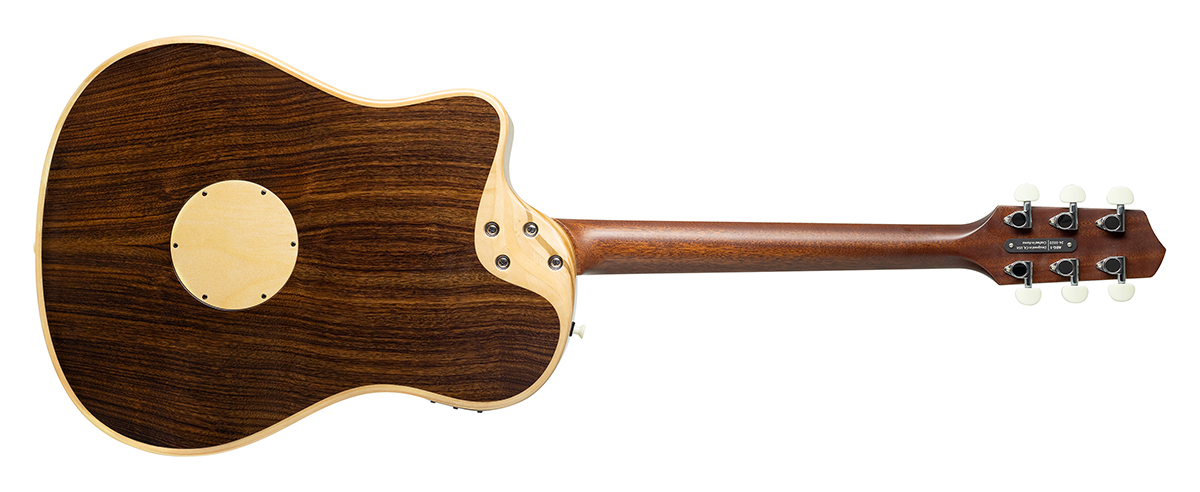
Baggs achieves this whole anomaly via another key component of the AEG-1’s unicorn thinline design. The sides and interior frame are made of composite poplar, which is essentially a fancy plywood. Yep, plywood! We’ll let Lloyd Baggs explain.
“I love the iconic midcentury plywood furniture of Charles and Ray Eames, and that of Eero Saarinen,” he says. “Recognizing the strength and the beauty offered by what was then thought of as a lowly material, these designers elevated ply to luxury status. The ply of the AEG-1 is custom made in the U.S.A. of highly sustainable poplar and offers the same qualities that inspired the Eames’ and Saarinen to embrace this material. It is strong, lightweight and extremely stable, making it the perfect platform to support the resonant top and back of our guitar.”
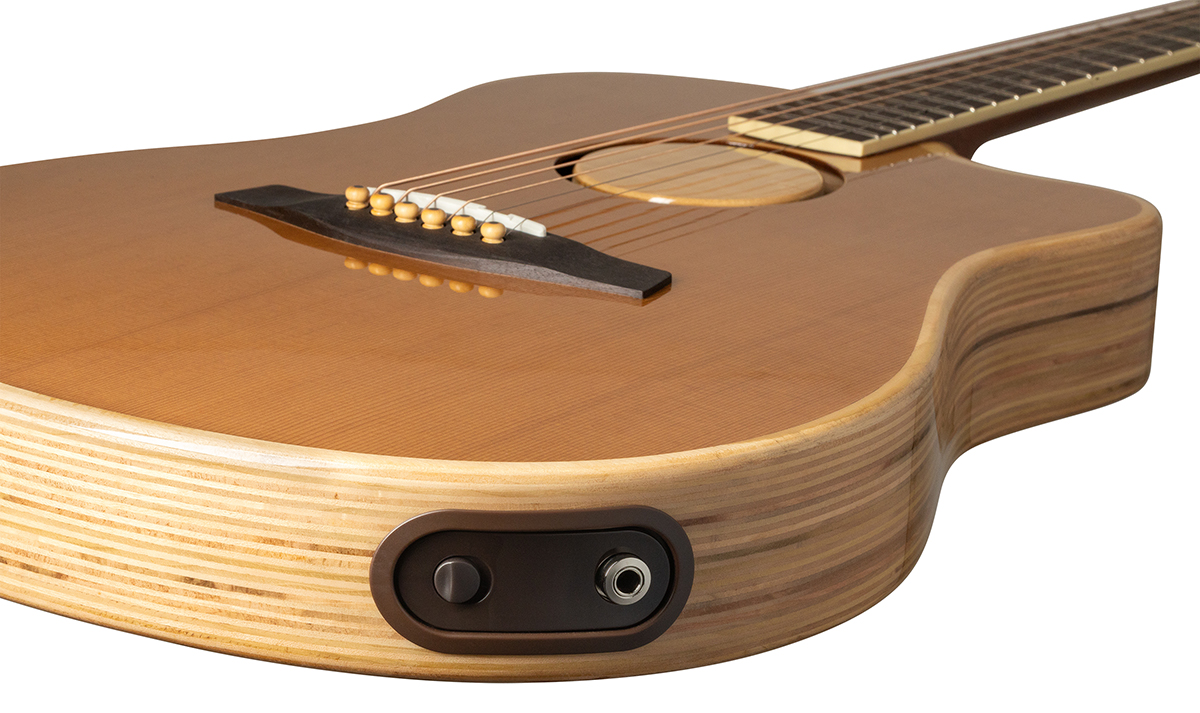
That all starts to make more sense when you see an inside photo of the body. There are three distinct chambers, and a whole lot of structural support for the bolt-on neck. According to Baggs, instead of the extra neck support coming from overbuilding the top and back to compensate, the AEG‘s patent-pending neck support system frees the top and the back to be voiced independently for greater dynamic response. All I know is that you can truly feel it acoustically, and when amplified, the AEG-1 packs a significantly powerful punch. Simply strum a chord and — bam! That’s the sonic hallmark here. Mike Tyson could have used such a wallop in his recent debacle against Jake Paul.”
I put the AEG-1 through paces in several different arenas, mainly playing through a Baggs Synapse Personal P.A. On a solo gig in a noisy brewery, I truly appreciated that powerful punchiness. This room had high ceilings and bad acoustics, which the AEG-1 did a solid job of penetrating. But what’s especially intriguing is how that punch is noticeably not piezo powered, so there’s no quack in the attack. It’s more of a sweeping punchiness. There’s a gang of inherent low end on this boomer, so in that room I cut it back a bit, boosted the treble and included only about one quarter of the mic signal. I did encounter some feedback, but a quick push of the phase button eliminated it on the spot.
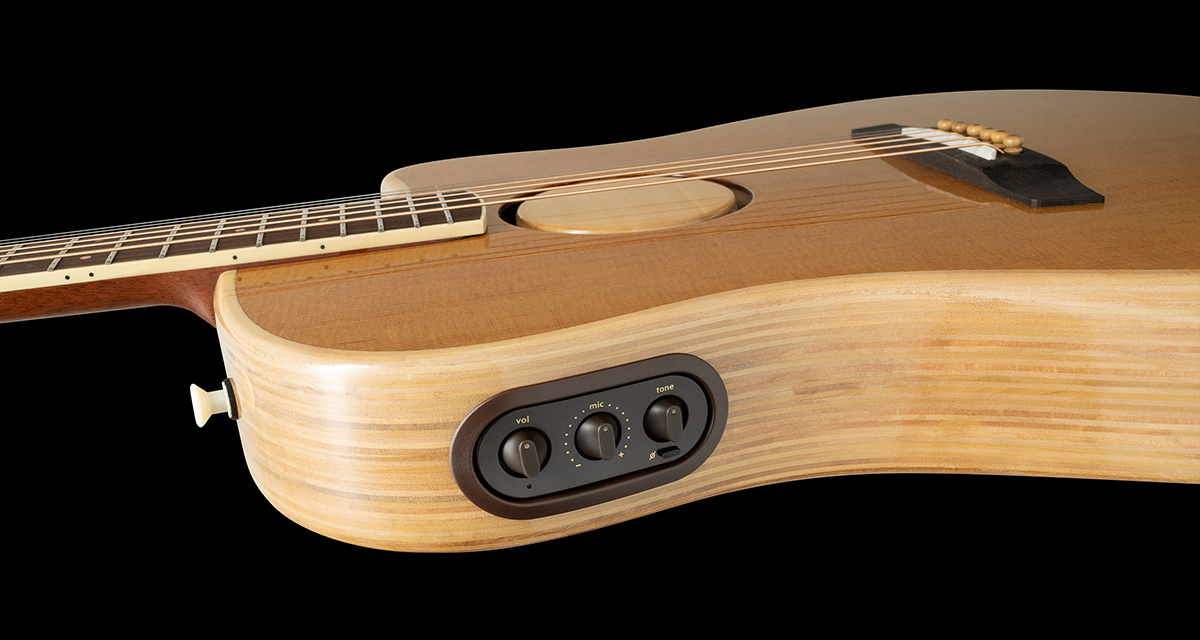
On a much quieter gig outdoors, in a lush winery patio setting, I was able to appreciate the subtle nuances the AEG-1 delivered during fingerpicking passages on intricate instrumentals. In both instances, I was running through a Fender Tone Master Pro processor, and I wound up creating a custom patch with very little processing for the AEG-1, simply because doesn’t need much. It’s as if the system has built-in compression to yield a tone that has the balls of an electric. At the same time, it sounds more like a “real” acoustic when amplified compared to other true acoustics with pickup systems installed. I suppose that’s the whole point. Baggs has done a ton of the legwork for you.
My only wish was to be able to add a third element, a magnetic pickup running on separate signal path, as I explain in this column. My main live instrument, a Martin CS-SC-2022, is customized to have a Baggs HiFi feeding body resonance into one output while a Baggs M1 passive magnetic set in the sound hole focuses on string tones. The filled-in sound hole on the AEG-1 makes putting a pickup in there impossible. (Hey Baggs, maybe include that on the next model, the AEG-2?)
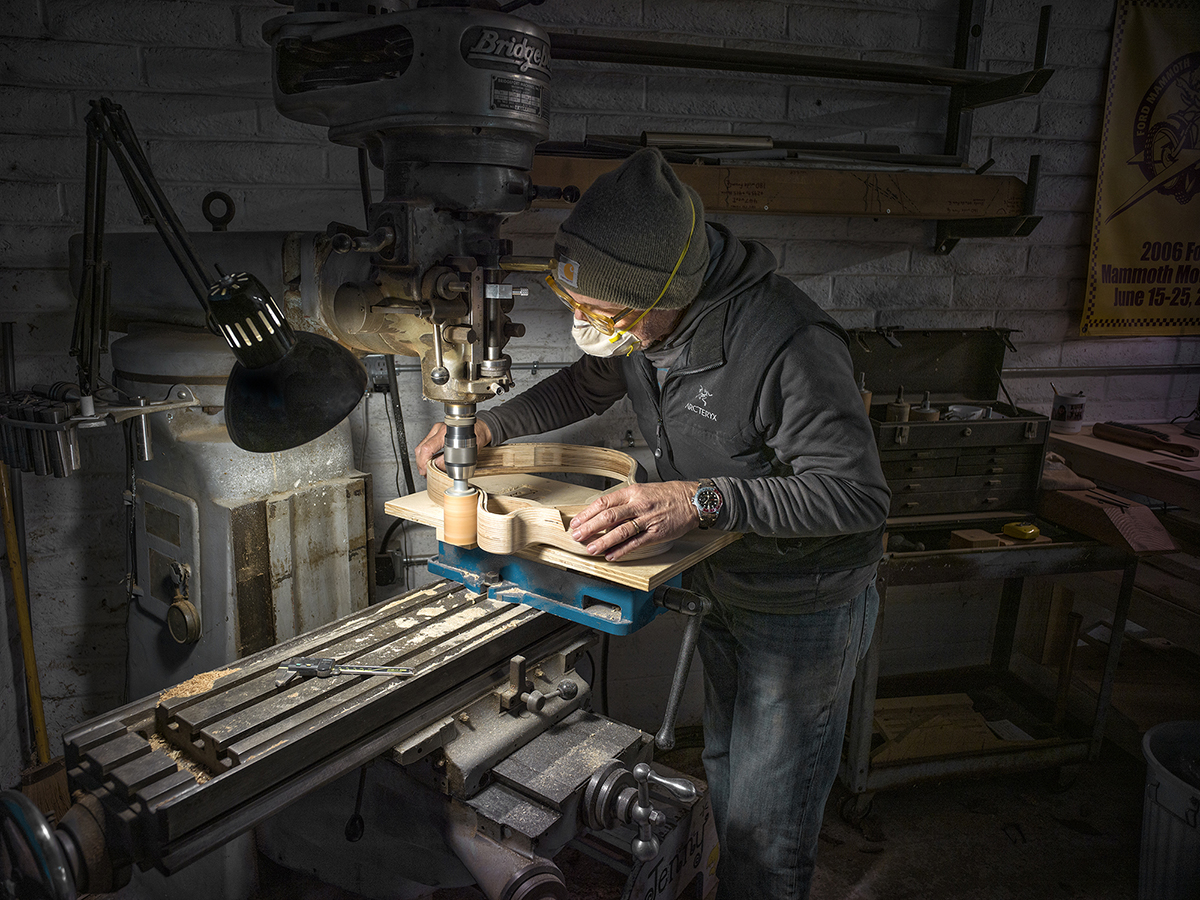
The current slogan of “relentless innovation in acoustic amplification” is a succinct and accurate description of the modern era at L.R. Baggs. Feeling like they’d mastered the basic piezo pickup problem to the utmost in the form of the Element and in a dual system including a Tru Mic with the Anthem, they moved on to more advanced pickup technologies, such as the body-sensor transducers at the heart of the HIFi. The original earned an Editors’ Pick last year, and we’ll check out the Duet with its new Silo microphone that they sent along to put in a traditional acoustic for its own review soon.
It’s also worth remembering that 2021’s Voiceprint Acoustic D.I. was a breakthrough, harnessing the power of iOS for an incredibly customizable DI signal by utilizing Impulse Resonance mapping. So not only is the AEG-1 a first for Baggs in the guitar realm, but it’s also intriguing to track how the company applies its other breakthroughs in reverse, with the guitar built around them.
The name implies more models are to come, and I’m curious to see what Baggs comes up with next. I won’t bother with speculation, but the AEG-1 sure provides a solid platform for further innovation. Early reaction to the AEG-1 appears enthusiastic — Molly Tuttle has been using it regularly onstage, finding it particularly appropriate for her clawhammer technique — and it stands to reason that we’ll be seeing an AEG-2, then an AEG-3 and so on. Perhaps that will mean integration of other pickups and even some version of Voiceprint. Time will tell. For now, we can savor another excellent result from Baggs in the form of the AEG-1 Acoustic Electric Guitar.
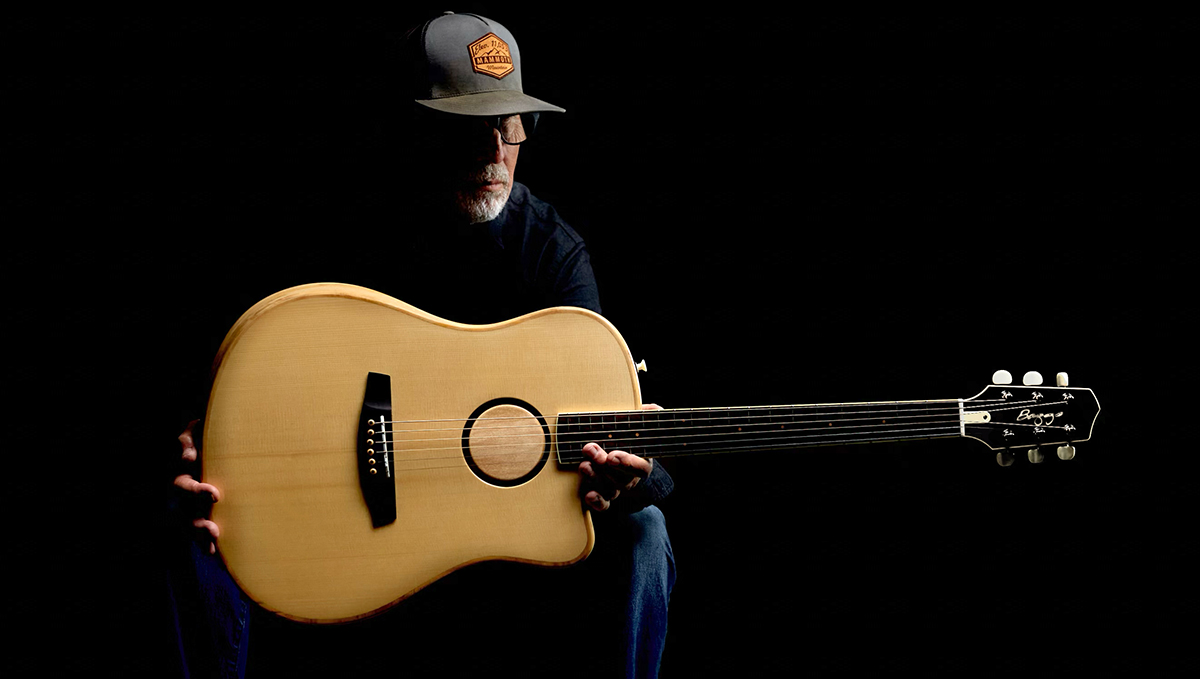
SPECIFICATIONS
AEG-1 Sunburst
CONTACT lrbaggs.com
PRICE $1,599 with gig bag
NUT WIDTH 1.7″, composite
NECK African mahogany, bolt-on
FRETBOARD Indian rosewood, 25.625″ scale
FRETS 20
TUNERS Closed back
BODY Indian rosewood (back), Sitka spruce (top), composite poplar (side frame)
BRIDGE Indian rosewood with composite saddle
ELECTRONICS Custom Baggs HiFi Duet with HiFi pickups and Silo microphone
CONTROLS Volume, Mic Blend, Tone, phase button
POWER 9-volt battery
FACTORY STRINGS D’Addario XT Phosphor Bronze Light gauges .012 – 053
WEIGHT 6 lbs (as tested)
BUILT Designed in USA, crafted in Korea
KUDOS Hearty and punchy amplified tone from shapely, comfortable body with great playability
CONCERNS Would be great if an open sound hole could support a magnetic pickup as well
GIPHY App Key not set. Please check settings